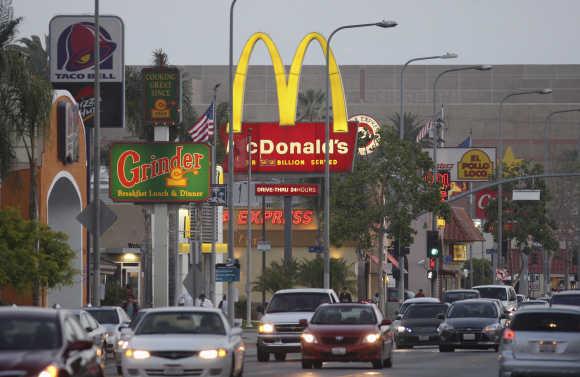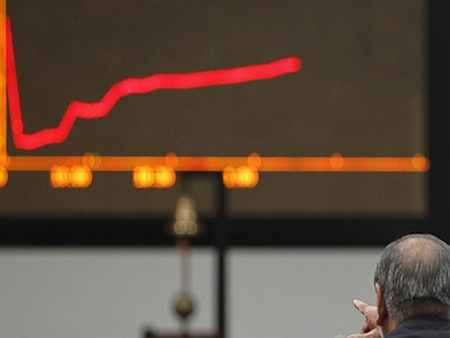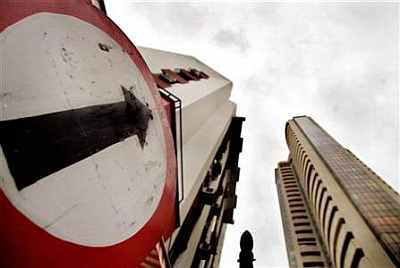Photographs: Ralph Orlowski/Reuters Daniel Gros
Many policy makers and economists have observed that the recovery from the 2007-2008 financial crisis has been much slower than most recoveries of the post-war era, which needed only a little more than a year, on average, to restore output and employment to their previous levels.
The misguided belief that 'this time is different' led policy makers to permit the credit boom of the early 2000s to continue for too long, thus preparing the ground for the biggest financial crisis in living memory.
But now, when it comes to recovery, the belief that this time should not be different might be equally dangerous.
Many policy makers and economists have observed that the recovery from the 2007-2008 financial crisis has been much slower than most recoveries of the post-war era, which needed only a little more than a year, on average, to restore output and employment to their previous levels.
By this standard, the current recovery is unacceptably slow, with both output and employment still below the previous peak.
. . .
Why the current economic recovery is different
Photographs: Reuters
Policy makers, thus, feel justified in using all available macroeconomic levers to achieve a recovery that resembles those of the past.
In doing so, officials are reluctant to take into account that the recent crisis resulted from an unprecedented credit boom gone bust.
To some extent, it should have been logical to expect an unprecedented upturn as well.
When the crisis erupted, many hoped for a V-shaped recovery, notwithstanding a substantial body of research showing that recoveries from recessions caused by a financial crisis tend to be weaker and slower than recoveries from 'normal' recessions.
. . .
Why the current economic recovery is different
Photographs: Reuters
The observation that recoveries following a financial crisis are different suggests that standard macroeconomic policies might not work as one would usually expect.
And a transatlantic comparison suggests that this may indeed be the case.
One would expect that the shock from the financial crisis should be comparable for the United States and the euro zone, given that they are of similar size, exhibit a similar degree of internal diversity, and experienced a similar increase in house prices (on average) in the years preceding the bust.
Moreover, the relative increase in debt (leverage) in the financial system was similar on both sides of the Atlantic.
. . .
Why the current economic recovery is different
Photographs: David McNew/Reuters
And, indeed, US economic performance has been very similar to that of the euro zone since the start of the crisis: GDP per capita today is still about two per cent below the 2007 level on both sides of the Atlantic.
The unemployment rate in the US and the euro zone has increased by about the same amount as well -- three percentage points.
Of course, one can point to particular countries in Europe that are mired in recession. But the US also has depressed areas.
. . .
Why the current economic recovery is different
Photographs: Asmaa Waguih/Reuters
For Ireland and Spain, read Nevada and California (and, for Greece, read Puerto Rico). The proper comparison is, thus, between the average of two continental-sized economies, both of which are characterised by considerable internal diversity.
These similarities in economic performance are striking, given that macroeconomic policy in the US and the euro zone has been so different.
The US let its fiscal deficit rise above 10 per cent of GDP, compared to less than six per cent of GDP in the euro zone.
Measured over a five-year period (2007-2012), the US has, thus, not done any better than the euro zone, although it has relied on a much larger dose of fiscal expansion.
. . .
Why the current economic recovery is different
Photographs: Reuters
In the US (and the United Kingdom), the general government deficit today is still around eight per cent of GDP, compared to a little more than three per cent of GDP in the euro zone, and the US debt/GDP ratio has increased by more than 41 percentage points, compared to 'only' 25 points in the euro zone.
In fact, the economy that has imbibed the strongest dose of expansionary policy has recovered less: GDP per capita in the UK today is still six per cent below the 2007 level.
Of course, one could argue that the UK was particularly exposed to the bust, because financial services make up a large part of its GDP.
. . .
Why the current economic recovery is different
Photographs: Arko Datta/ Reuters
But the fact remains that its economy, supposedly the most flexible in Europe, has not recovered from the shock five years later, despite massive fiscal and monetary stimulus, coupled with a substantial devaluation.
On balance, it thus seems that this time -- or, rather, this post-crisis environment -- really is different, and that macroeconomic policies have done little to improve matters.
Countries like the US and the UK, which are accumulating debt at a record pace, are betting that deficit spending will eventually pay off in a stronger economy.
But they risk ending up with debt/GDP ratios north of 100 per cent, which would leave them at the mercy of financial markets should sentiment turn against them.
History suggests that interest rates will not remain at record-low levels indefinitely, and that when change comes, it might be abrupt.
Why should we expect this time to be different?









article